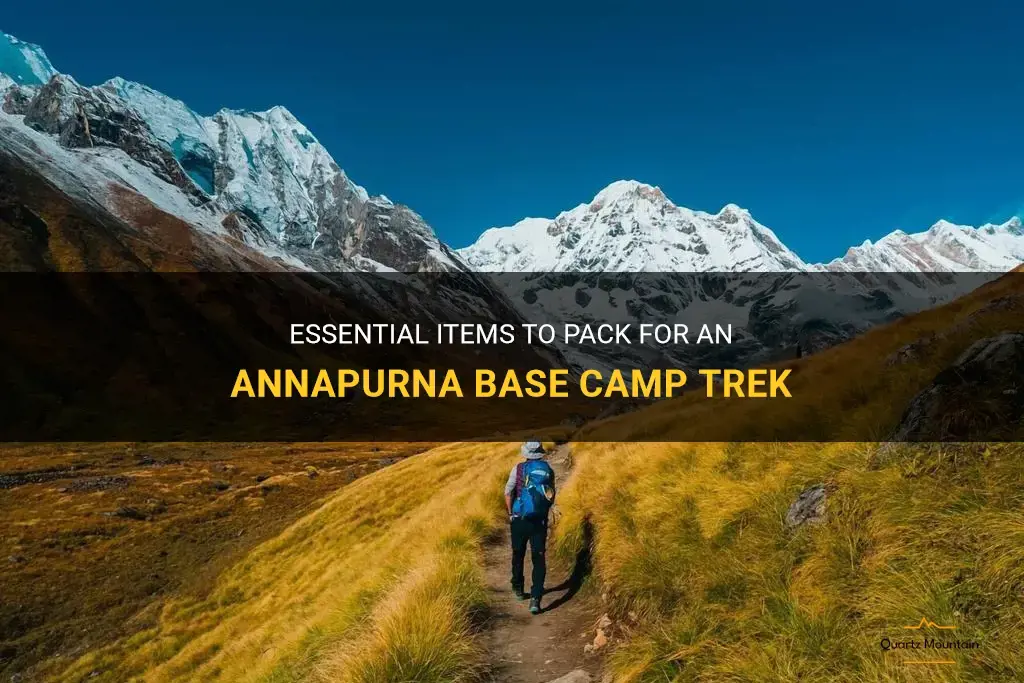
Are you planning an adventurous trek to the Annapurna Base Camp in Nepal? As you prepare for this once-in-a-lifetime experience, it is crucial to pack the right essentials that will ensure your safety, comfort, and enjoyment along the way. From proper trekking gear to must-have personal items, this guide will provide you with a comprehensive list of essential items to pack for your Annapurna Base Camp trek. So, grab your backpack and get ready to embark on this thrilling adventure through breathtaking landscapes and majestic mountains!
| Characteristic | Value |
|---|---|
| Altitude | up to 4,130 meters |
| Temperature | -10°C to 15°C |
| Terrain | rugged and steep |
| Duration | 10-15 days |
| Clothing | layering required |
| Footwear | sturdy trekking boots |
| Sleeping Bag | down-filled |
| Water | Purification tablets |
| First Aid Kit | essential |
| Headlamp | with extra batteries |
| Sunglasses | with UV protection |
| Backpack | 40-60 liters |
| Sunscreen | high SPF |
| Snacks | energy bars |
| Trekking Poles | adjustable |
| Camera | durable and waterproof |
What You'll Learn
- What are the essential clothing items to pack for the Annapurna Base Camp trek?
- What kind of footwear is recommended for the trek?
- What specific gear and equipment should be included in the pack?
- Are there any necessary documents or permits to bring for the trek?
- What personal care items and medications should be packed for the Annapurna Base Camp trek?

What are the essential clothing items to pack for the Annapurna Base Camp trek?
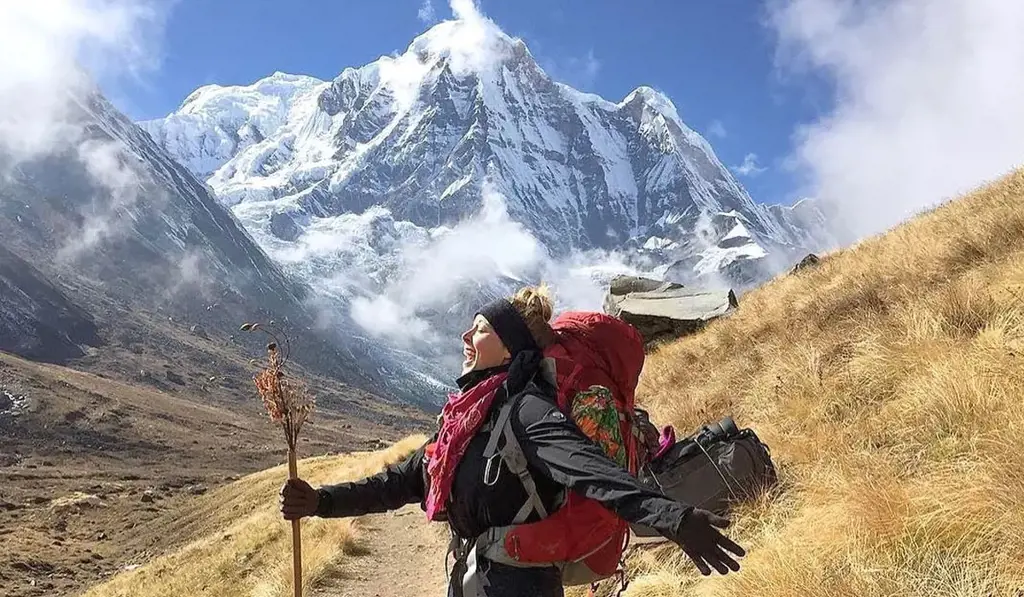
When preparing for a trek to Annapurna Base Camp, it is crucial to pack the right clothing items to ensure your comfort and safety along the way. The Annapurna Base Camp trek is a strenuous and challenging journey that takes you through a variety of terrains, including forests, villages, and high altitude areas. Here are some essential clothing items to pack for the Annapurna Base Camp trek:
- Base Layers: Base layers are the foundation of your clothing system. Opt for moisture-wicking and quick-drying materials like merino wool or synthetic blends. Bring both a top and bottom base layer to regulate your body temperature in different weather conditions.
- Insulating Layers: As you ascend to higher altitudes, the temperature drops significantly. Pack a warm fleece jacket or a down jacket to provide insulation against the cold. Layering is key, so make sure to have enough insulation to keep you warm.
- Waterproof Jacket: The weather in the Annapurna region can be unpredictable, with sudden rain or snowfall. A waterproof jacket with a hood will protect you from getting wet and keep you dry and warm. Look for a jacket that is breathable to prevent overheating during strenuous climbs.
- Trekking Pants: Choose lightweight and quick-drying trekking pants that are comfortable to hike in. Opt for pants with zip-off legs to provide versatility in changing weather conditions. It is also a good idea to pack a pair of thermal leggings for extra warmth during chilly nights.
- Trekking Shirts: Pack a few moisture-wicking and breathable trekking shirts. Look for shirts with UV protection to shield you from the sun's harmful rays. Long-sleeved shirts are beneficial for added sun protection and protection against insects.
- Hats and Gloves: Protect your extremities by packing a warm beanie or hat to retain heat. Additionally, bring a pair of waterproof and insulated gloves to keep your hands warm and dry during colder sections of the trek.
- Hiking Socks: Invest in high-quality trekking socks that provide cushioning and support for your feet. Merino wool socks are an excellent choice as they are moisture-wicking and help prevent blisters. Bring enough pairs to ensure you always have a fresh pair to wear.
- Hiking Boots: Proper footwear is essential for a trek like Annapurna Base Camp. Invest in a pair of sturdy and waterproof hiking boots with ankle support. Make sure to break them in before your trek to avoid blisters and discomfort.
- Sunglasses and Sunscreen: The sun's rays can be intense at higher altitudes. Protect your eyes by bringing a good pair of sunglasses that offer UV protection. Apply sunscreen with a high SPF to protect your skin from sunburn.
- Rain Gear: Pack a lightweight and packable rain cover for your backpack and pants to stay dry during unexpected rain showers. This will also prevent your gear from getting wet.
Remember to pack lightweight, moisture-wicking, and versatile clothing items to minimize the weight of your backpack and allow for easy layering. It's also a good idea to bring a few extra clothing items in case of emergencies or when certain items need to dry. By packing the right clothing items, you will stay comfortable and protected throughout your Annapurna Base Camp trek.
Essential Items to Pack for an Internship in a Different State
You may want to see also

What kind of footwear is recommended for the trek?

When it comes to trekking, having the right footwear is essential for a safe and enjoyable experience. The type of footwear you choose can make a huge difference in your comfort, performance, and even prevent injuries. In this article, we will discuss the different types of footwear recommended for trekking.
Hiking Boots:
Hiking boots are the most popular and recommended footwear for trekking. They are specially designed to provide ankle support, stability, and grip on uneven terrain. Hiking boots generally have a high-cut design that protects your ankles from sprains and twists. They also have thick, rugged soles with lugs that provide excellent traction on various surfaces. Hiking boots are typically made with waterproof materials like leather or synthetic fabrics, ensuring your feet stay dry during wet conditions. They come in different levels of stiffness, from flexible to firm, depending on the type of trek and terrain you will be tackling.
Trail Running Shoes:
Trail running shoes are a great option for those who prefer a lighter and more flexible footwear option. They are designed specifically for running on trails but can also be used for trekking. Trail running shoes provide good grip with aggressive outsoles, which can be beneficial when trekking on muddy or rocky terrain. They are generally made with lightweight and breathable materials, allowing for better comfort during long treks. However, trail running shoes often lack the ankle support of hiking boots, so they might not be suitable for treks with heavy loads or rough terrains.
Approach Shoes:
Approach shoes are a hybrid between hiking boots and climbing shoes. They are designed for technical approaches and scrambling on steep terrain. Approach shoes have sticky rubber soles that provide excellent traction on rocky surfaces, making them ideal for treks that involve a lot of scrambling or climbing. They have a lower-cut design compared to hiking boots, providing more freedom of movement for your ankles. However, approach shoes may not have the same level of ankle support as hiking boots, so they might not be the best choice for treks with heavy backpacks or for those who have weak ankles.
Sandals:
In some cases, trekking in sandals can be a suitable option, especially in hot and dry climates. Trekking sandals are designed with adjustable straps, which provide a snug and secure fit to your feet. They have thick and rugged soles that offer good traction on various surfaces. Trekking sandals are lightweight, breathable, and allow your feet to stay cool and dry during hot weather. However, sandals do not provide the same level of protection and ankle support as hiking boots or shoes, so they may not be ideal for treks that involve rough terrain or heavy loads.
In conclusion, the type of footwear recommended for a trek depends on various factors such as the terrain, weather conditions, duration of the trek, and personal preferences. Hiking boots are the most versatile option and provide the highest level of ankle support and protection. Trail running shoes offer a lighter and more flexible alternative, while approach shoes are suitable for technical treks that involve scrambling and climbing. Sandals can be an option for treks in hot and dry climates, but they lack the same level of protection and ankle support as other footwear options. Whatever type of footwear you choose, it is important to ensure a proper fit, break them in before the trek, and wear appropriate socks to prevent blisters and discomfort.
Must-Have Essentials for a Week in Miami: Packing Guide
You may want to see also

What specific gear and equipment should be included in the pack?
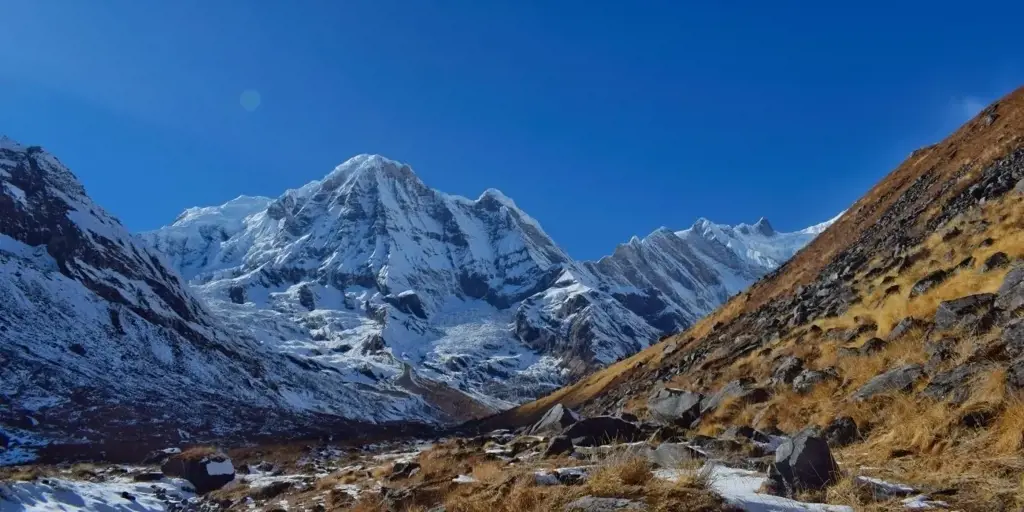
When going on outdoor adventures, it is important to have the right gear and equipment to ensure your safety and comfort. Whether you are hiking, camping, or engaging in any other outdoor activities, having the proper gear can make a huge difference. In this article, we will discuss what specific gear and equipment should be included in your pack for a successful and enjoyable outdoor experience.
Backpack:
The first item on your list should be a good quality backpack. Look for one that is comfortable and has multiple compartments and pockets for organization. Your backpack should also have adjustable straps to distribute weight evenly and a waterproof cover to protect your belongings from rain.
Navigation:
A reliable navigation system is essential when exploring the outdoors. This can include a compass, map, and a GPS device. Make sure you know how to use them properly to avoid getting lost.
Clothing:
Pack clothing suitable for the weather conditions of your destination. This may include base layers, insulating layers, and waterproof outer layers. Don't forget to pack extra socks and undergarments. It is also advisable to pack a hat, sunglasses, and gloves to protect yourself from the sun and cold.
Footwear:
Investing in a good pair of hiking shoes or boots is crucial for any outdoor adventure. Look for shoes that provide ankle support and have a good grip on different terrains. Don't forget to break them in before your trip to avoid blisters.
Shelter:
Depending on your activity, you may need a tent, tarp, or hammock for shelter. Choose a lightweight and waterproof option that suits your needs. Don't forget to pack stakes, tent poles, and a groundsheet for added protection and stability.
Sleeping Gear:
A sleeping bag, sleeping pad, and pillow are essential for a good night's rest in the outdoors. Look for a sleeping bag that is rated for the temperature range of your destination. Consider the size and weight of your sleeping gear, as it should fit comfortably in your backpack.
Cooking Equipment:
If you plan on cooking your meals, consider packing a lightweight stove, cookware, utensils, and a food storage container. Additionally, bring along a water filtration system or purification tablets to ensure you have access to safe drinking water.
First Aid Kit:
Accidents can happen, so it is important to pack a well-stocked first aid kit. Include items such as bandages, antiseptic wipes, pain relievers, tweezers, and any necessary prescription medications.
Lighting:
A headlamp or flashlight is essential for illuminating your surroundings at night. Make sure to bring extra batteries or consider a rechargeable option.
Miscellaneous Items:
Don't forget to pack other essential items such as a multi-tool, rope, duct tape, insect repellent, sunscreen, and toiletries. Additionally, consider bringing a camera or binoculars to capture the beauty of your outdoor adventure.
Before heading out, it is important to research the specific needs and regulations of your destination. Pack smart and only bring what you need to avoid unnecessary weight. Practice using your gear and equipment before your trip to ensure you are familiar with how they work.
In conclusion, having the right gear and equipment is crucial for a successful outdoor adventure. By including the items mentioned above in your pack, you will be well-prepared for various outdoor activities. Remember to prioritize safety and comfort and enjoy your time exploring the great outdoors.
Essential Items to Pack for a Productive Scientific Conference
You may want to see also

Are there any necessary documents or permits to bring for the trek?
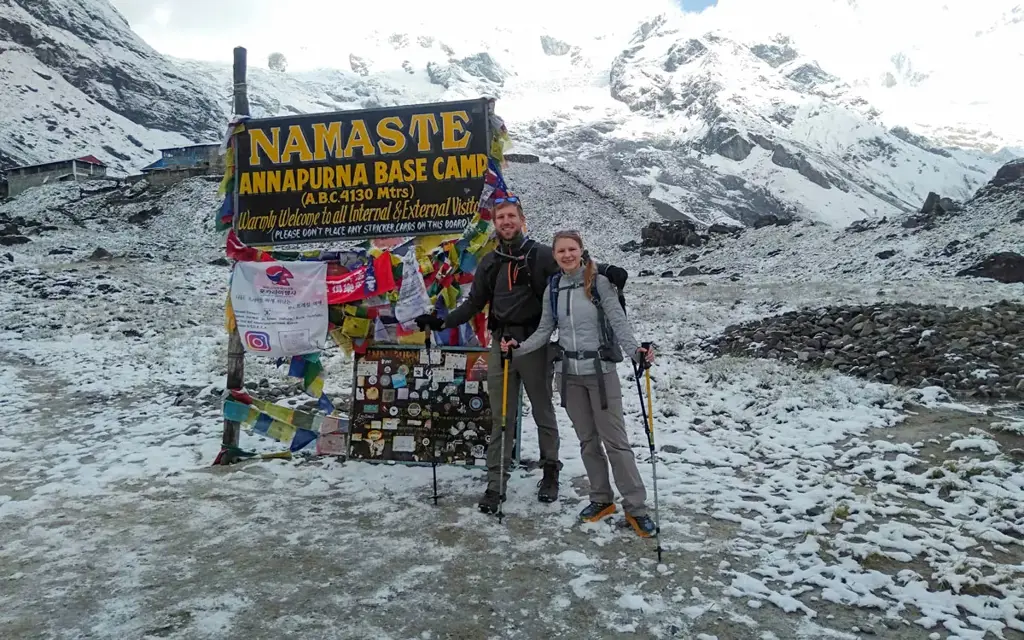
When embarking on a trekking adventure, it is important to ensure that you have all the necessary documents and permits. These documents and permits not only ensure your safety but also help in preserving the environment and supporting the local communities. In this article, we will discuss some of the essential documents and permits you should bring for your trek.
- Passport: Your passport is the most important document you should carry with you on any international adventure. Make sure it has a validity of at least six months from the date of entry into the destination country. Additionally, keep a photocopy of your passport and store it separately as a backup.
- Visa: Many countries require a visa for entry. Research the visa requirements for your destination country and obtain it before your trek. Some countries provide visa-on-arrival facilities, while others require pre-arranged visas. Make sure to check the validity and type of visa required for your trekking adventure.
- Trekking Permits: Depending on the destination, you may need to obtain trekking permits. These permits are often required to regulate the number of trekkers and to control the impact on the environment. For example, popular trekking regions like the Annapurna Circuit Trek in Nepal require trekkers to obtain the Annapurna Conservation Area Permit (ACAP) and the Trekker's Information Management System (TIMS) card. These permits can be obtained in Kathmandu or Pokhara before starting your trek.
- Insurance: Trekking involves certain risks, and it is crucial to have travel insurance that covers emergency medical evacuation and medical expenses. Check if your insurance policy covers high-altitude trekking and any other specific requirements for your destination. Remember to carry a copy of your insurance policy and emergency contact numbers.
- Medical Certificate: Some trekking destinations, especially those at high altitudes, may require a medical certificate from a qualified physician stating that you are fit for trekking. This is to ensure your safety and minimize the risks associated with altitude-related illnesses. Consult your trekking operator or search for specific requirements for your chosen trekking route.
- Local Regulations: Local regulations may vary from one destination to another. It is essential to familiarize yourself with the specific rules and regulations of the area you plan to trek in. For example, some regions may have restrictions on camping or the use of certain equipment. Respect the local traditions, customs, and guidelines to ensure a positive trekking experience for both you and the local community.
In conclusion, bringing the necessary documents and permits is vital for a smooth and hassle-free trekking experience. Make sure to check the specific requirements for your destination and obtain all the required documents well in advance. Remember to keep copies of important documents separately and carry them with you during the trek. By being prepared with the right documents and permits, you can focus on enjoying the breathtaking landscapes and unique experiences that trekking has to offer.
Essential Packing List for a November Cruise to Bermuda
You may want to see also

What personal care items and medications should be packed for the Annapurna Base Camp trek?
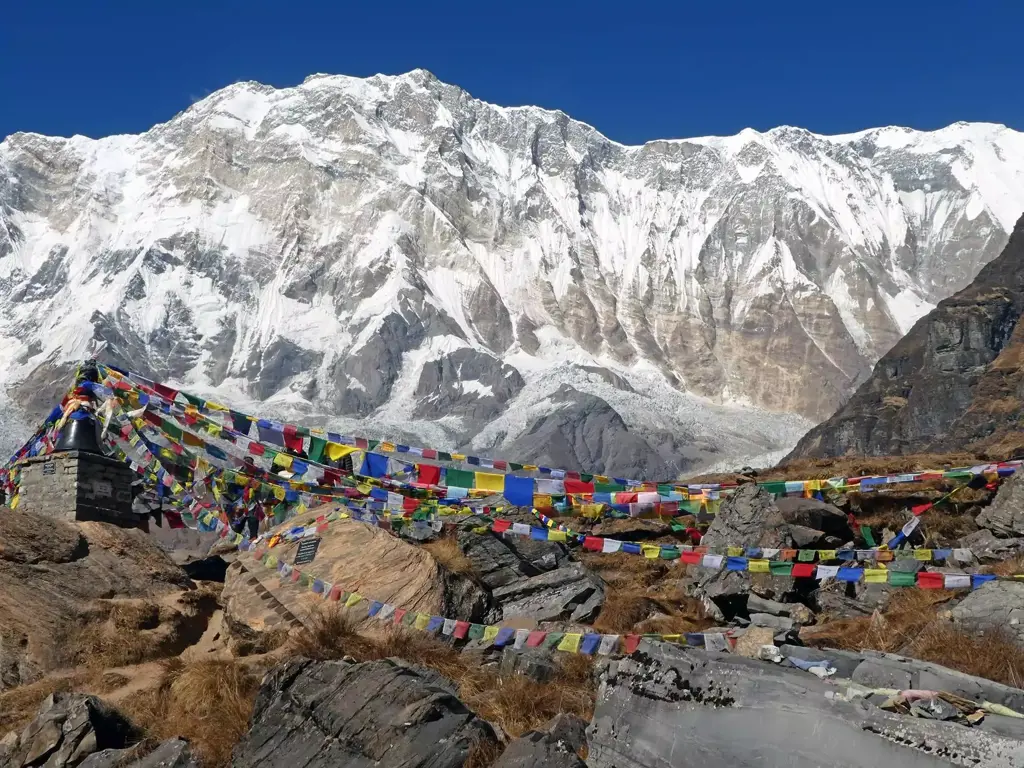
When embarking on the Annapurna Base Camp trek, it is important to pack a variety of personal care items and medications to ensure a comfortable and safe journey. The following guide will outline the essential items to bring along on this challenging adventure.
First aid kit:
A well-stocked first aid kit is crucial for any trek, especially in remote areas like the Annapurna Base Camp. It should include adhesive bandages, antiseptic cream, painkillers, blister pads, and any prescription medications. It’s also a good idea to pack a basic guide on wilderness first aid techniques in case of emergencies.
Medications:
If you have any pre-existing medical conditions, consult your doctor before traveling to ensure you have a sufficient supply of your medications. Given the high altitude and physical exertion involved in the Annapurna Base Camp trek, it is essential to consider medications for altitude sickness prevention or treatment. Acetazolamide (Diamox) is commonly used to prevent and alleviate the symptoms of altitude sickness. Consult your doctor to determine the appropriate dosage for your needs.
Pain relievers:
The Annapurna Base Camp trek involves long hours of walking, which can lead to muscle soreness and fatigue. Pack over-the-counter pain relievers like ibuprofen or acetaminophen to help alleviate discomfort.
Insect repellent:
Due to the region's climate and altitude, mosquitoes may be present along the trek. Applying insect repellent with at least 20-30% DEET can help protect against mosquito bites and the diseases they may carry.
Sunscreen:
At higher altitudes, the sun's rays can be stronger and more damaging. Pack a high SPF sunscreen and apply it generously throughout the day. Don't forget to protect your lips with a lip balm containing SPF as well.
Personal hygiene items:
Pack travel-sized versions of your essential personal hygiene items, such as toothpaste, toothbrush, soap, shampoo, and toilet paper. Portable hand sanitizer is also useful for maintaining cleanliness when soap and water are not readily available. Wet wipes can be handy for refreshing yourself during the trek.
Lip balm and moisturizer:
The Annapurna region's high altitude and dry climate can cause dry and chapped lips and skin. Carry a quality lip balm with SPF protection and a moisturizer to prevent discomfort and maintain healthy skin.
Water purification tablets:
Safe drinking water may not always be readily available along the trail. Carrying water purification tablets or a portable water filter can help ensure your drinking water is free from harmful bacteria and parasites.
Leukotape or athletic tape:
To prevent and treat blisters, it's essential to have proper foot care. Leukotape or athletic tape can provide extra cushioning and support to your feet, preventing blisters and hotspots from developing.
Extra prescription glasses/contact lenses:
If you rely on glasses or contact lenses, bring a spare pair in case of loss or damage during the trek. The remote location of the Annapurna Base Camp may make replacing them difficult.
Remember to pack these items in a waterproof bag or container to protect them from moisture during the trek. Additionally, it is crucial to check the expiration dates of medications and replace any that have expired.
By packing these personal care items and medications, you can ensure a safe and comfortable trek to the Annapurna Base Camp. Consult with your healthcare provider before the trip to address any specific medical concerns and to ensure you have all the necessary medications and supplies for the journey.
Essential Items to Pack for a Memorable Desert Adventure
You may want to see also
Frequently asked questions
When packing for the Annapurna Base Camp trek, it's important to be prepared for changing weather conditions. You should pack layers of clothing to adjust to different temperatures. Bring a lightweight, quick-drying base layer, a warm mid-layer fleece or down jacket, and a waterproof and windproof outer layer. Don't forget to pack a hat, gloves, and a scarf to protect yourself from the cold.
Along with clothing, there are a few essential pieces of equipment you should bring for the Annapurna Base Camp trek. A good pair of hiking boots is crucial for the rough terrain. You should also bring a sturdy backpack, a trekking pole for stability, and a sleeping bag rated for cold temperatures. Additionally, don't forget to pack a headlamp, a water bottle or hydration bladder, sunscreen, and a first aid kit.
In addition to clothing and equipment, there are a few other items you should pack for the Annapurna Base Camp trek. Bring a toiletry kit with essential items such as a toothbrush, toothpaste, soap, and wet wipes. It's also a good idea to pack a quick-drying towel, a durable water bottle or water purification tablets, and snacks for energy during the trek. Don't forget to bring a camera or smartphone to capture the stunning views along the way.







